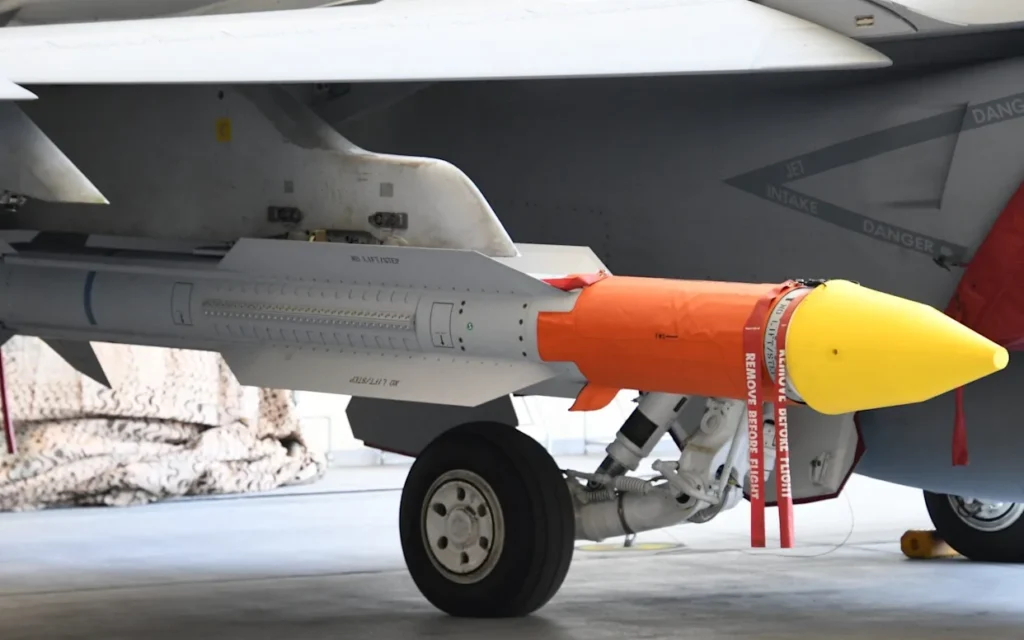
Donald Trump has approved the sale of thousands of cheap, extended-range cruise missiles to Ukraine to provide the country with a powerful new strike capability.
The $825m (£612m) package of 3,350 extended range attack munition (Eram) missiles and GPS navigation kits marks the first major delivery of new weapons to Ukraine under the Trump administration.
The stockpile could be delivered within six weeks, according to reports, signalling an admission from Washington that it expects the conflict – now in its fourth year – to drag on.
Following another night of deadly Russian strikes on Ukrainian cities, the US state department said on Thursday that the sale would “improve Ukraine’s capability to meet current and future threats by further equipping it to conduct self-defence and regional security missions”.

Confirming the news, Andriy Yermak, Volodymyr Zelensky’s chief of staff, said: “Up to 3,350 Eram missiles and 3,350 navigation modules to counter spoofing will be procured.”
The announcement of the arms sale was delayed until after Mr Trump’s summits with Vladimir Putin and Mr Zelensky that failed to achieve significant movement on the gridlocked peace talks, US officials told the Wall Street Journal.
Erams are not as deadly as the US-made Atacms or as powerful as the British and French-supplied Storm Shadow bunker-busting missiles that Ukraine has used to strike targets in Crimea and Russia.
Effectively a hybrid between a cruise missile and an advanced aerial bomb, the air-launched Eram has a reported range of up to 280 miles, flies at speeds of at least 430mph and carries a 500lb warhead.
The US began the Eram project in July last year, under the Biden administration, to provide Kyiv with an affordable, mass-produced long-range cruise missile option to strike high-value targets deep behind enemy lines.
While Erams cannot match the 2,300mph Atacms or 600mph Storm Shadows for speed, Ukraine can use the cheaper missiles far less sparingly. The same money would buy fewer than 800 of the more powerful Western munitions.
Its considerable range – which almost matches the Storm Shadow – allows Ukrainian jets to fire the missiles while out of range of Russian air defences and expands its reach beyond many weapons in its arsenal, including Western-supplied precision-guided bombs.
“Massive use of Eram could change the operational situation, reduce Russia’s capacity for offensive actions, and disrupt supply and communication chains,” according to Mykhailo Samus, a defence analyst at the New Geopolitics Research Network think tank.
However, other experts voiced scepticism over whether the Eram could be a game-changer, highlighting the likely restrictions Washington will attach to their use.
Ivan Stupak, a Ukrainian military expert and former officer in the state security service, said there were still too many questions to answer before any fanfare.
“In theory, everything is good – the number of missiles and their operating range of up to 450km. But there is no clear answer over how Ukraine will be able to use these munitions,” he told The Telegraph.
“Will the army have to get permission from the Pentagon to strike on Russian territory? What about striking on occupied Ukrainian territory and what kind of approving procedure will there be?” he asked.
US officials have said the use of the Eram would require Kyiv to seek approval from the Pentagon and it was unlikely Ukraine would be able to strike targets inside Russia given that such attacks are currently off-limits for US-supplied Atacms missiles.
Ukraine, meanwhile, is developing its own domestic long-range cruise missiles – the 1,900-mile Flamingo and 620-mile Long Neptune – raising hopes Kyiv will soon be able to launch large strikes inside Russian territory without Western-imposed restrictions.

The Pentagon quietly introduced a review mechanism in the spring that has been blocking Kyiv from striking targets on Russian soil to lure Putin to the negotiating table, the Wall Street Journal reported last week, citing official sources.
The US veto has also effectively barred Ukraine from using other Western long-range missiles in cross-border attacks which rely on US intelligence for targeting.
It reverses a decision made by Joe Biden in his final months as president to allow Ukraine to use Atacms – which have a range of 190 miles – to hit Russian territory.
Kyiv will make the purchase of the Erams with funding from Denmark, the Netherlands and Norway and a loan guarantee from the US, provided Congress approves the transaction.
The new sale is likely to provide relief to Kyiv and it indicates the seriousness of US intentions to restart large-scale arms deliveries to Ukraine, provided they are funded by European allies.
Under Mr Biden, Washington committed to providing more than $65bn (£48bn) in military aid to Ukraine, but Mr Trump – long sceptical of assistance for Kyiv – has instead demanded Europe pay a greater share.
In July, an agreement was reached for European Nato allies and Canada to purchase American weapons for Ukraine, shielding Mr Trump from accusations that the US is directly involved in the war. The Eram package marks one of the first purchases under this deal.












